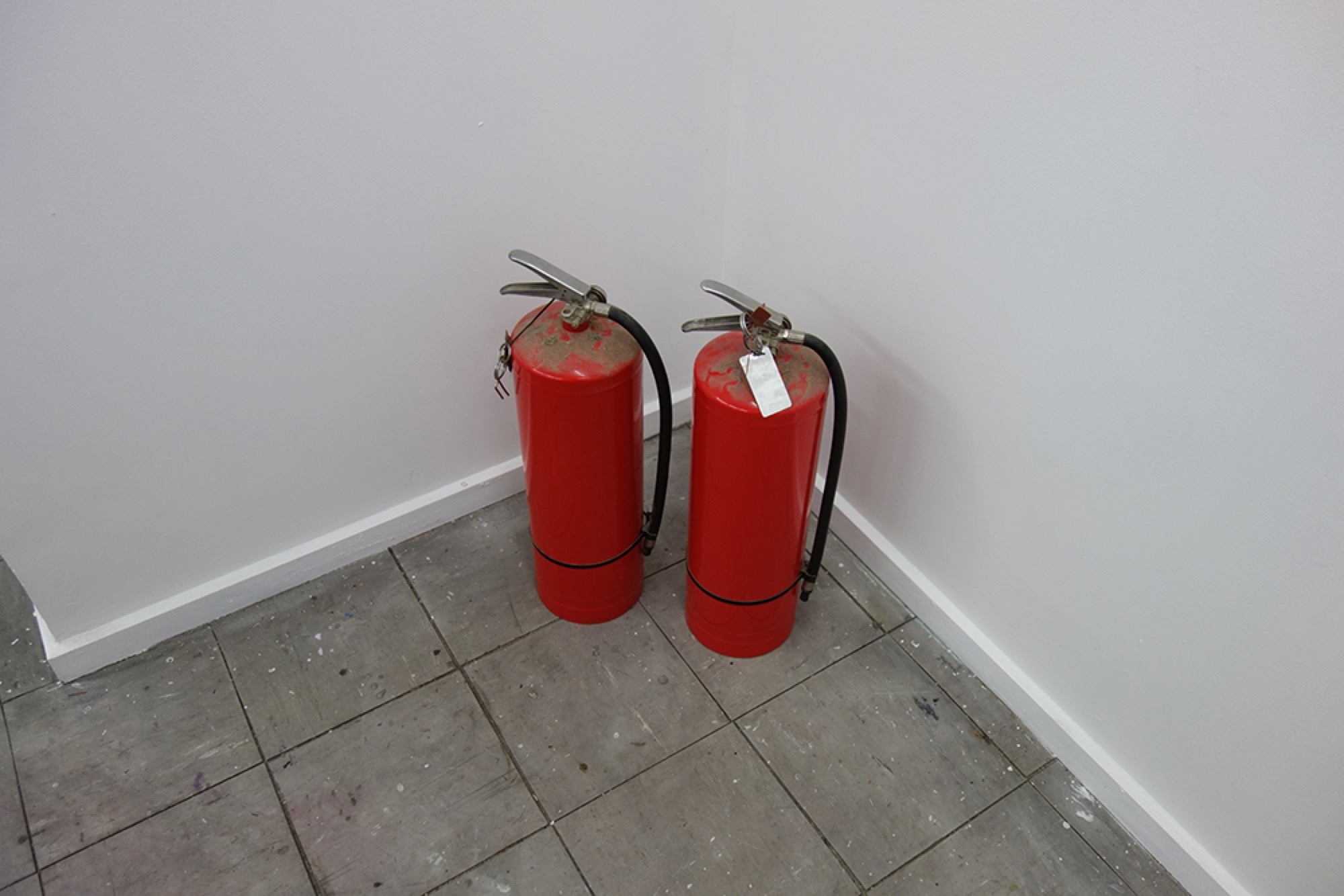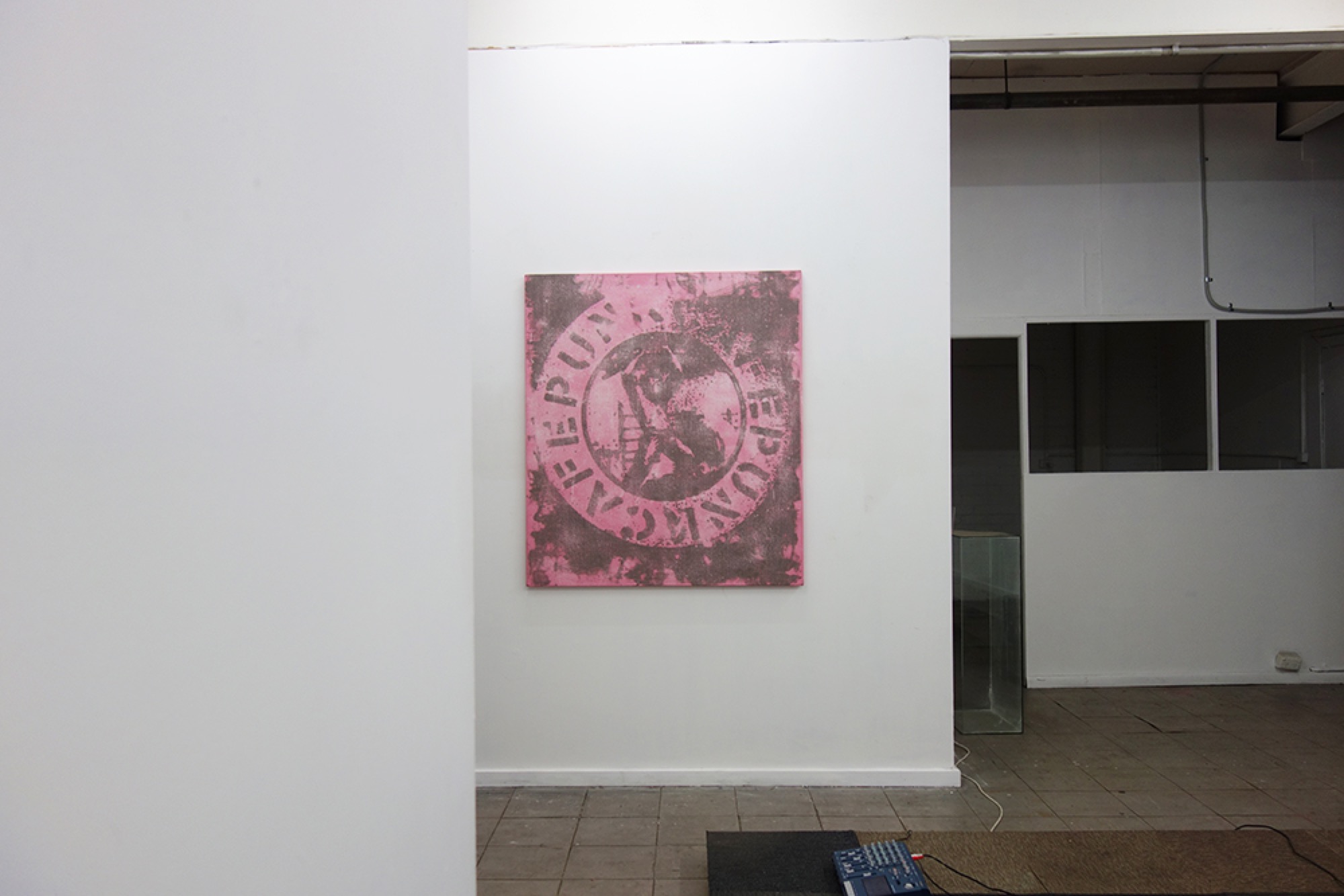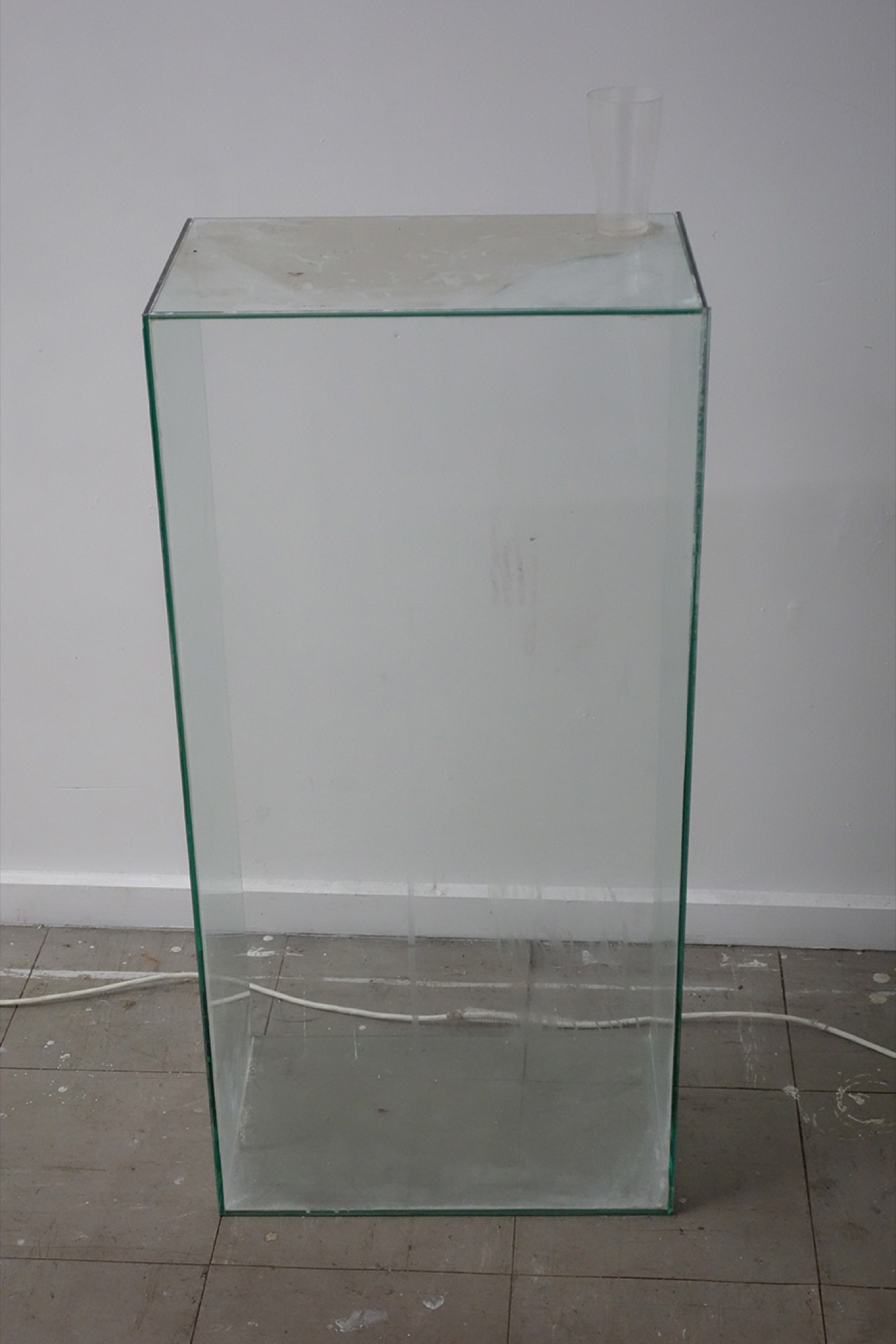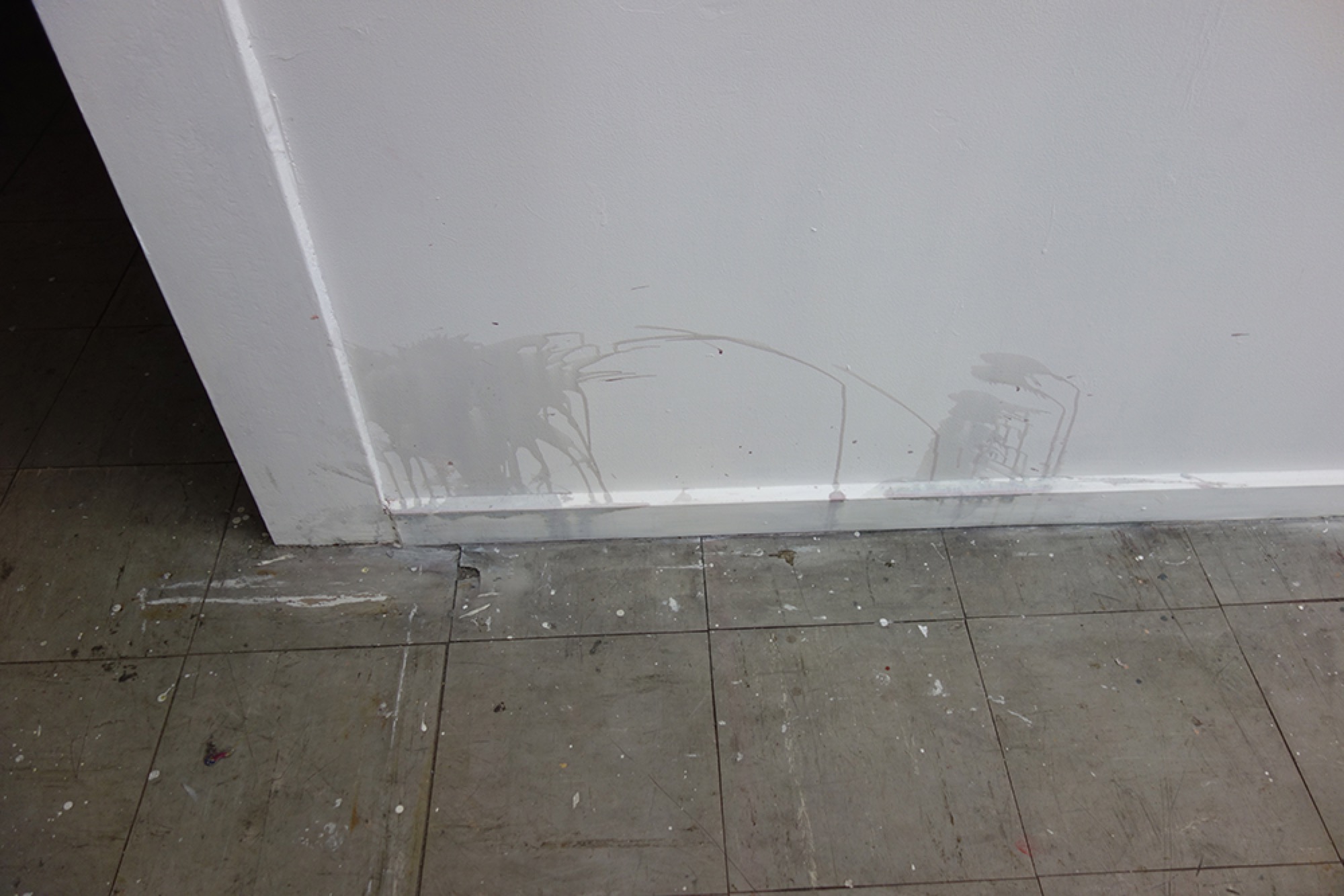Liam Osborne: Hot Copy
Helen Hughes
Presented by Liam Osborne, the young Melbourne artist and director/curator of the Brunswick East gallery Punk Café, Hot Copy is a meditation on themes of boredom, repetition, monotony, uselessness and impactlessness. These themes are charted both in relation to the artist's day-to-day routines (working to pay rent, to make art, etc.) and in relation to the role of Punk Café as a Melbourne artist-run gallery (one that tries to avoid bureaucracy and a boring, box-ticking exhibition program by not having funding, nor a board, nor a call for proposals, but still—like the galleries it opposes—stages exhibitions every few weeks or months, and has done so since it opened in 2015). The sense of boredom, repetition, monotony, uselessness and impactlessness staged by the exhibition is interrupted—but, crucially, only barely—by the residues of violence or disruption that pepper the show. These, too, ultimately fade into scenes of repetition and monotony, giving the exhibition its palpably nihilistic, anti-climactic can't go on/must go on attitude.

There are three main physical elements to the show, and a spectral fourth: 1) a series of six screen prints on canvas stretched over frames that line the gallery's walls; 2) a slightly raised wooden platform covered in dirty old carpet tiles in bleak-office grey, blue and beige hues, and scattered with several readymade objects; and 3) a voiceless musical soundtrack that slowly oscillates between minor and major keys for about twenty minutes, before the tape deck audibly clicks off and the room returns to silence.

Following Warhol, the paintings in the series are all the same but for their superficially different monotone colours—in red, orange, purple, blue, green, pink. They are repeated screenprints of what looks like a punk patch: the words 'PUNK CAFE' in sans serif capitals encircle a renowned Hare Krishna image of a man with a bull's head poised to decapitate a bull with a man's head. Despite the gore of the original image, the words and images are barely legible—let alone shocking. Osborne has sanded back the paint to such a degree that they begin to disappear into oblivion, leaving the viewer to try to wrestle them back from the tired surface of the canvas.

Even if we wanted to coax those words and images out, there's limited room to move around the paintings or get distance on them due to the broad platform set up in the middle of the space. It pushes visitors towards the gallery's walls, leaving a narrow path around the perimeter of the space and thereby forces a kind of frustrating shortsightedness onto the paintings. The platform itself is only about ten centimetres high—a sorry excuse for an elevation. Its dirty carpet tiles seem to be nothing more than a receptacle for more dirty receptacles: a baking tray encrusted with fragments of cooked animal flesh and a few gnawed leg bones; two ceramic goblets; an upturned glass jug; and a metal ashtray with the ash and butt of a single stubbed-out cigarette. Two fire hydrants take up space in an otherwise unoccupied corner of the gallery. By the doorway to where the bar is usually set up at openings, a crusty Perspex plinth with the residue of spilt drink dribbling down its front supports an empty plastic beer glass. In the smaller room that sometimes hosts the bar, or a gallery attendant on weekends, is a pair of black and white prints of two young girls crying. The prints are identical and sit side by side on the floor leaning against the wall in white frames. One is darker/higher-contrast than the other, as if the photocopier was beginning to run out of ink—perhaps a metaphor for compassion fatigue that recurs like a chorus throughout the show.

The sound component of the exhibition is a manipulation of the theme music to Fassbinder's 1980 miniseries Berlin Alexanderplatz slowed-down 400 per cent. The miniseries chronicles the day-to-day life of ex-con, Franz, recently released from Tegel prison. Replete with tales of Franz's affairs, his violence, money trouble, alcohol binges, and general destitution, the series culminates with a renowned delusion sequence in which Franz, now incarcerated in an asylum, vividly rehearses his own violent death and that of his lover's—by being repeatedly run-over by a car, whipped and bashed, ritualistically slaughtered in a white-tiled, blood-drenched abattoir, and tortured by knife whilst simultaneously being strangled. Slipping back and forth between reality and fantasy, Franz finally snaps out of his violent visions to find himself in a courtroom, coolly testifying to the good behaviour of his friend who is on trial for manslaughter. This sonic reference is unlikely to be legible to visitors to the exhibition, and is not intended to be. Osborne is more interested in the slowed-down composition's capacity to fragment and reorient our experience of time. But its reference point, however hidden, hints at a life in which violence is normalised, internalised, and rapidly moved-on with, like so many images slipping off the surface of our smart phones. Slowed down to such a degree, the theme music sounds numb, otherworldly, drugged.

A key antecedent for Osborne is the body of work left behind by American artist Paul Thek, who died in 1988. As is often recounted in commentaries on his career, Thek was compelled by a need to reinsert the body—literally its meat or flesh—into the clinically clean and corporate environment of 1960s East Coast American minimalism, and famously did so by presenting wax effigies of human body parts inside Perspex cubes. He was suspicious, if not horrified, by the neat, geometric lines and machine-perfect finishes of the work of his contemporaries, like Carl Andre (a man who, after all, has always been suspected by some to have murdered his partner, the Cuban body artist Ana Mendieta).

In addition to Thek, Hans Haacke's 1965 Condensation Cube naturallycomes to mind when looking at the sullied Perspex plinth in Hot Copy. Both the condensation in Haacke's and the spilt drink on Osborne's work draw attention to a surface that is supposed to remain invisible (or at least transparent) in the gallery experience. And for both, that surface is deployed as a metonym of the broader art-institutional context. This is what I would describe as the spectral fourth element of the exhibition.

As the self-reference to the gallery in the series of paintings betrays, Osborne's work is marked by an introspective deliberation on the micro social, artistic and institutional contexts that he finds himself in, and indeed cultivates to some degree as the director/curator of Punk Café. Over the last few years, the gallery has been the site of several exhibitions that have sparked important discursive conflicts, which have either played out as direct interventions in the space or as quasi-public debates on social media. This context—from which Osborne's work emerges, and which it in turn seeks to represent—can oftentimes feel claustrophobic, shortsighted and repetitive (all sensations manifested in the exhibition itself), as each new call out or social denunciation begins to bleed into the next. Osborne doesn't exempt himself or his work from this regime; on the contrary, he affirms his intractable complicity. We might even say that Osborne rehearses it in this exhibition like Franz rehearses the violent spectacle of his own death in the epilogue to Berlin Alexanderplatz. In so doing, an abject, self-deprecating sensibility (one that is also enshrined in the self-mocking name of the gallery, Punk Café) emerges in lieu of the imperious overtones we are used to encountering in this scene. No beautiful souls here.
Helen is research curator at Monash University Museum of Art, and an assistant lecturer in Art History and Curatorial Practice in the Faculty of Art, Design & Architecture at Monash University.
Title image: Liam Osborne, Hot Copy, Punk Cafe, Melbourne, 2017, courtesy the artist.)


